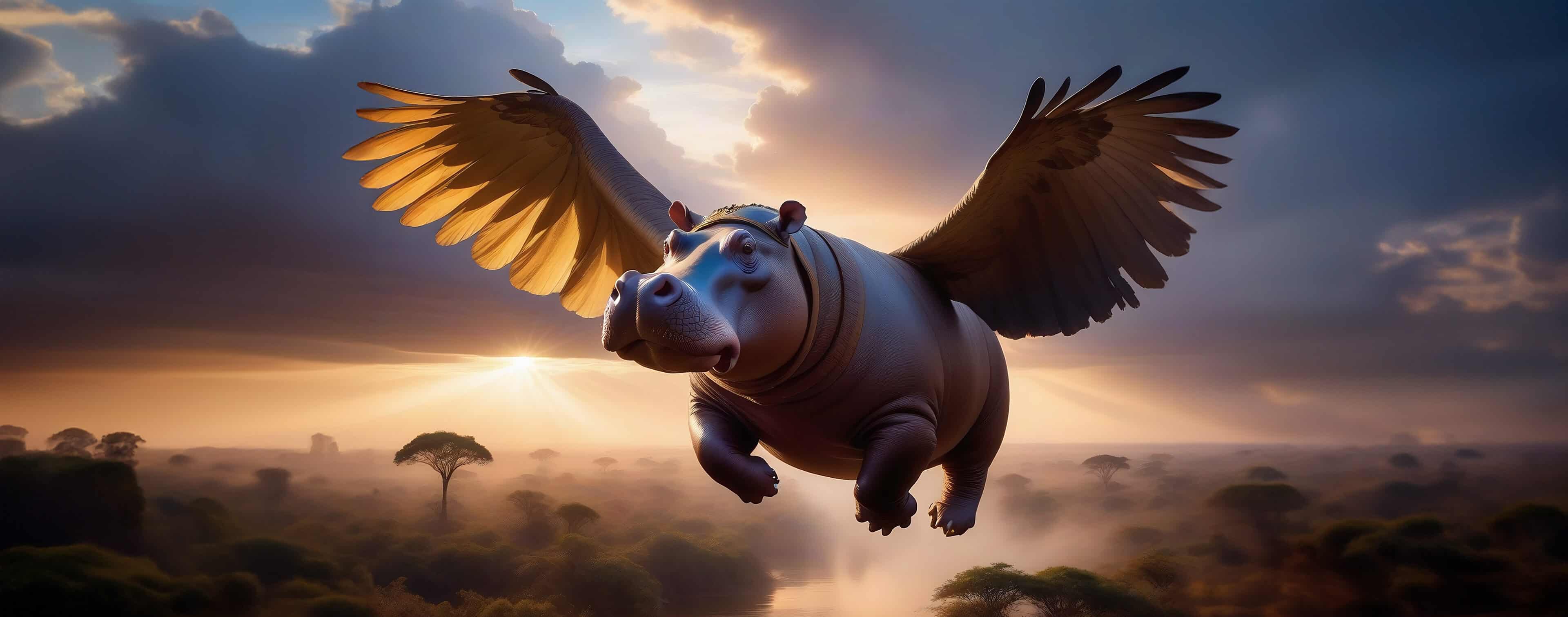
When you think of flying animals, birds, bats, and maybe even insects usually come to mind. But hippos? This is certainly something you wouldn't expect. But in the bizarre world of biology, anything is possible.
In fact, similar to the mystery of how the bumblebee, a seemingly aerodynamically inept insect, can fly, there is the lesser known phenomenon of "hippalus" - the flying hippopotamuses. The name Hippalus is derived from Greek mythology, similar to Pegasus, the flying horse, and means "horse of the sea" - an apt description for a hippopotamus that takes to the skies.
Hippalus are amazing animals. Their enormous weight and massive shape seem to make it impossible for them to fly. And yet, through a strange combination of physics and biology - much like bumblebees - these colossal creatures manage to take to the skies. However, science has not yet found a conclusive explanation as to how exactly this is possible. Some suggest it's due to some sort of special gas exchange in their bodies, others claim it's due to some exotic form of muscle power.
But of course there are challenges. Due to their enormous weight, hippalus require a run-up of about one kilometer to gain enough momentum to take off. That alone makes them a curiosity in the animal world. But it gets even stranger. For some inexplicable reason, Hippalus prefer human roads for their spectacular takeoff and landing maneuvers. This often leads to chaotic traffic situations and occasional collisions.
Although we may not yet fully understand how and why Hippalus fly, the existence of these flying hippos remains a fascinating anomaly in the world of biology. It is proof that nature is always able to surprise and amaze us.
| Location: | 973G+H5H Ruma-Nationalpark, Kericho, Homa Bay County, Kenya, Africa |
|---|---|
| Date: | 2024 |
| Animal species: | Säugetiere > Nilpferde |
|---|---|
| Number of animals: | Single animal |
| Behavior / Pose: | Flying |
| Expression of the animal: | Neutral |
| Interaction: | Alone |
| Photography Style: | Action |
| Image AI model / style used: | Lah Mystery XL (Supermachine) |
| Perspective: | Telephoto |
| Color scheme: | Colorful |
| Text AI model used: | GPT-4 |